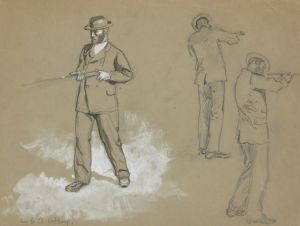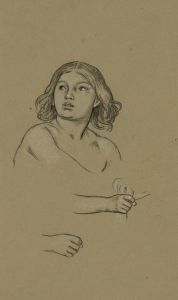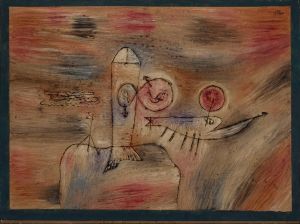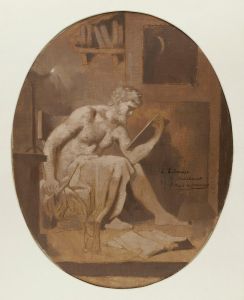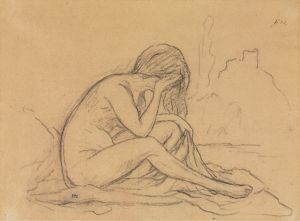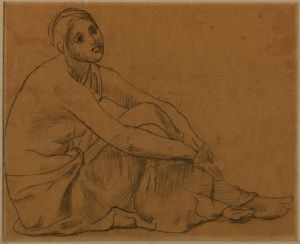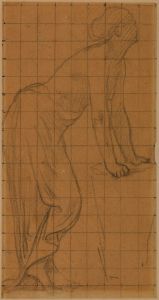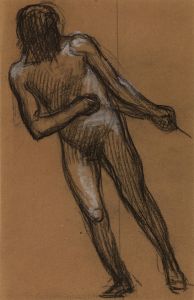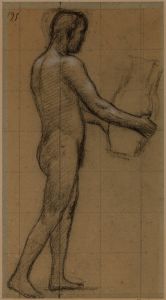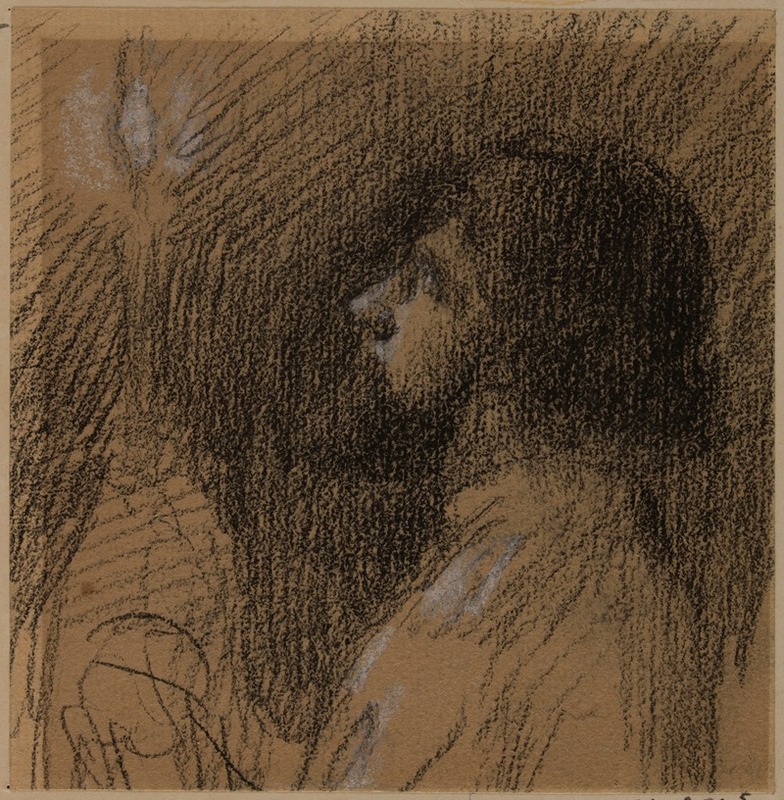
Tête d’homme, de profil à gauche
A hand-painted replica of Pierre Puvis de Chavannes’s masterpiece Tête d’homme, de profil à gauche, meticulously crafted by professional artists to capture the true essence of the original. Each piece is created with museum-quality canvas and rare mineral pigments, carefully painted by experienced artists with delicate brushstrokes and rich, layered colors to perfectly recreate the texture of the original artwork. Unlike machine-printed reproductions, this hand-painted version brings the painting to life, infused with the artist’s emotions and skill in every stroke. Whether for personal collection or home decoration, it instantly elevates the artistic atmosphere of any space.
Pierre Puvis de Chavannes (1824-1898) was a French painter known for his mural painting, which often depicted allegorical and classical themes. One of his works, "Tête d’homme, de profil à gauche" (Head of a Man, in Profile to the Left), is a notable example of his skill in portraiture and his ability to capture the human form with subtlety and precision.
"Tête d’homme, de profil à gauche" is a drawing that showcases Puvis de Chavannes' mastery in rendering the human profile. The artwork features the head of a man, viewed from the left side, emphasizing the contours and structure of the face. The drawing is executed with a delicate touch, highlighting the artist's proficiency in using line and shading to create depth and dimension.
Pierre Puvis de Chavannes was a prominent figure in the 19th-century French art scene. He was born in Lyon, France, and initially studied law before turning to art. He received his artistic training in Paris, where he studied under several notable artists, including Eugène Delacroix and Thomas Couture. Puvis de Chavannes is best known for his large-scale murals, which adorn public buildings such as the Panthéon in Paris and the Boston Public Library in the United States.
Throughout his career, Puvis de Chavannes developed a distinctive style characterized by its simplicity, clarity, and harmonious composition. His works often feature serene, idealized figures set against tranquil landscapes or architectural backgrounds. While his murals are his most famous works, his smaller-scale drawings and paintings, such as "Tête d’homme, de profil à gauche," demonstrate his versatility and attention to detail.
The exact date of creation for "Tête d’homme, de profil à gauche" is not well-documented, but it is consistent with Puvis de Chavannes' broader body of work, which spans from the mid-19th century until his death in 1898. The drawing reflects the artist's interest in classical themes and his ability to convey a sense of timelessness through his art.
Puvis de Chavannes' influence extended beyond his lifetime, impacting both his contemporaries and future generations of artists. His approach to composition and his emphasis on the harmonious arrangement of figures and space influenced the Symbolist movement and other modern art trends. Artists such as Paul Gauguin and Georges Seurat admired his work, and his legacy can be seen in the development of modern mural painting.
"Tête d’homme, de profil à gauche" is a testament to Puvis de Chavannes' skill as a draftsman and his ability to capture the essence of his subjects with economy and grace. The drawing remains an important piece within his oeuvre, illustrating the artist's commitment to exploring the human form and his dedication to the principles of classical art.
In summary, "Tête d’homme, de profil à gauche" by Pierre Puvis de Chavannes is a significant work that exemplifies the artist's talent in portraiture and his broader contributions to 19th-century French art. The drawing highlights his mastery of line and form, as well as his enduring influence on the art world.





